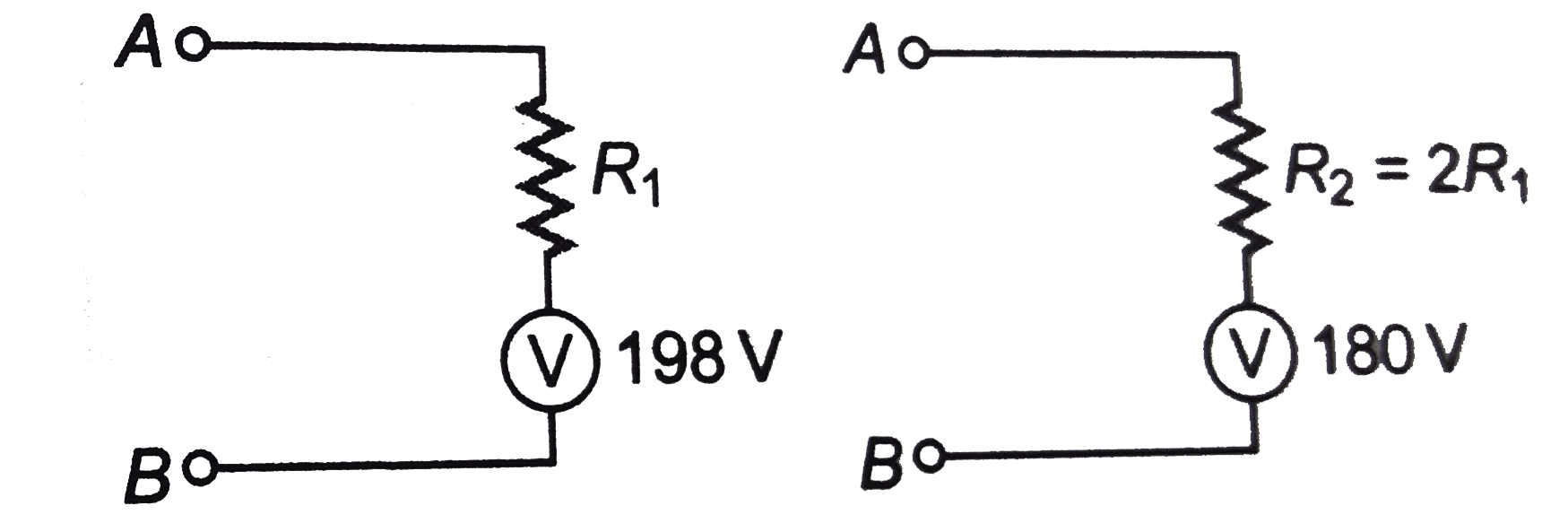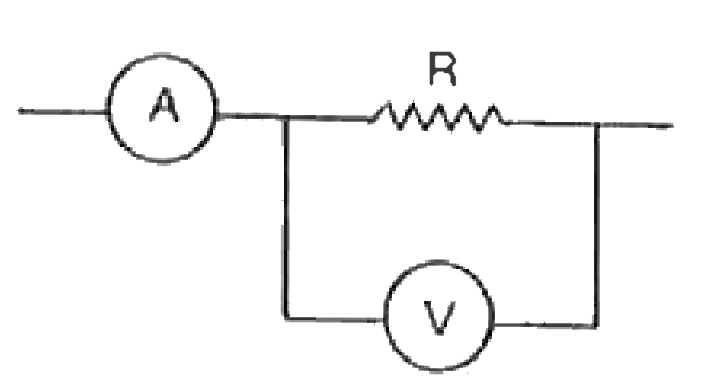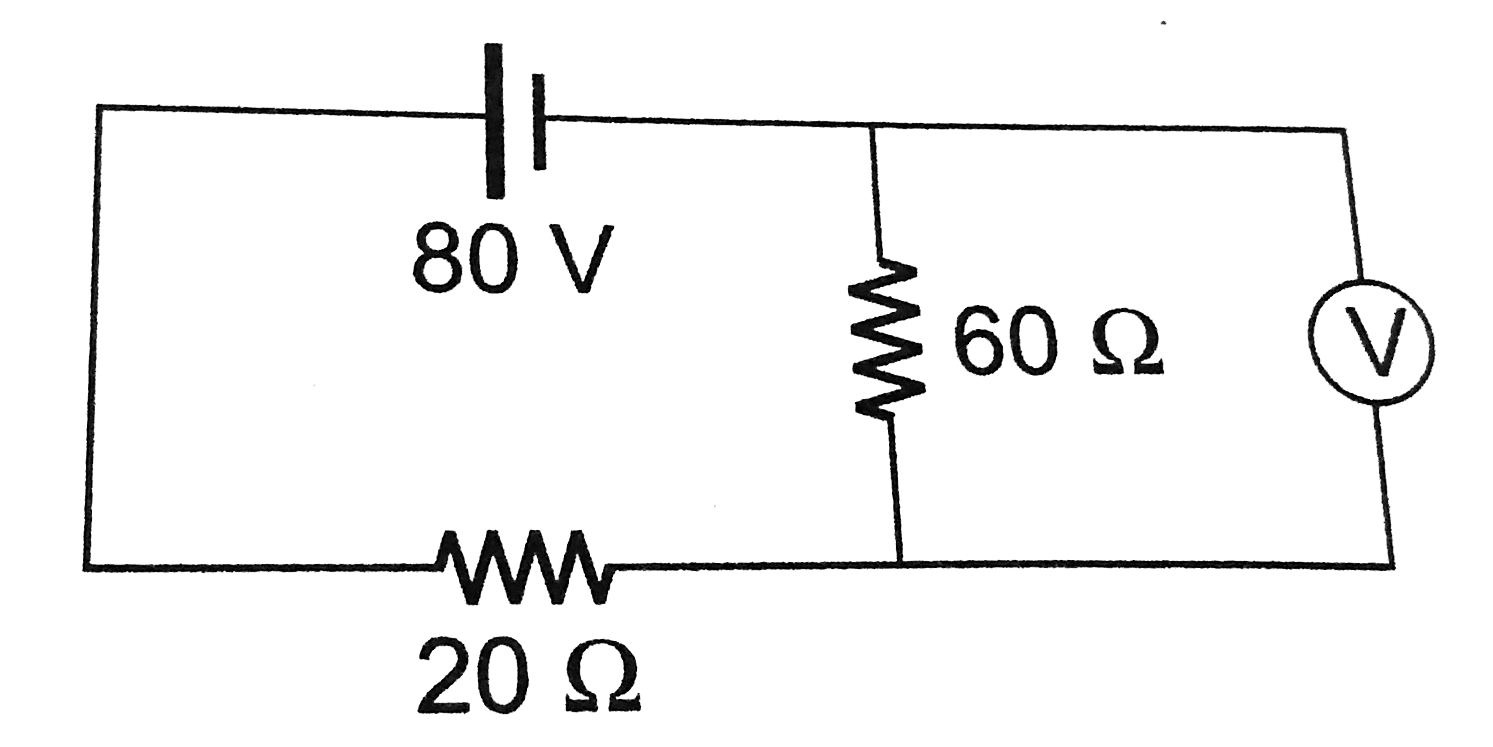To convert a voltmeter measuring 15V into a voltmeter measuring 150V, if the resistance of the voltmeter is 1000Ω, the resistance to be connected is
The correct Answer is:2
R=G(n−1)
Topper's Solved these Questions
- BOOK - NARAYNACHAPTER - MOVING CHARGES AND MAGNETISMEXERCISE - Level-II(C.W)63videos
MOVING CHARGES AND MAGNETISM
- BOOK - NARAYNACHAPTER - MOVING CHARGES AND MAGNETISMEXERCISE - LEVEL-III45videos
MOVING CHARGES AND MAGNETISM
- BOOK - NARAYNACHAPTER - MOVING CHARGES AND MAGNETISMEXERCISE - C.U.Q-KEY121videos
MOVING CHARGES AND MAGNETISM
- BOOK - NARAYNACHAPTER - MAGNETISM AND MATTEREXERCISE - EXERCISE - 4 (SINGLE ANSWER TYPE QUESTION)17videos
MAGNETISM AND MATTER
- BOOK - NARAYNACHAPTER - NUCLEAR PHYSICSEXERCISE - LEVEL-II-(H.W)9videos
NUCLEAR PHYSICS
Similar Questions
A voltmeter connected in series with a resistance R1 to a circuit indicates a voltage V1=198V. When a series resistor R2=2R1 is used, the voltmeter indicates as voltage V2=180V. If the resistance of the voltmeter is RV=900Ω, then the applied voltage ( in volt ) across A and B is
 View Solution
View SolutionThe circuit shown here is used to measure resitance R. An ammeter shows a current of 2A and a voltmeter of a potential difference of 120 V. what is the resitance R if the internal resistance of the voltmeter is Rv = 3000Ω?
How large will the error in measuring R be, if the resistance of the voltmeter is assumed to be infinitely large?
 View Solution
View Solution
Knowledge Check
- Question 1 - Select One
To convert a voltmeter measuring 15V into a voltmeter measuring 150V, if the resistance of the voltmeter is 1000Ω, the resistance to be connected is
A10,000Ω in seriesB9,000Ω in seriesC11000Ω in seriesD8000Ω in series - Question 2 - Select One
In the circuit figure, the voltmeter reads 30 V. The resistance of the voltmeter is
 A1200ΩB700ΩC400ΩD300Ω
A1200ΩB700ΩC400ΩD300Ω - Question 3 - Select One
The voltmeter reads 40V across 60Ω resistance. The resistance of voltmeter is.
 .A10ΩB20ΩC30ΩD40Ω
.A10ΩB20ΩC30ΩD40Ω
(a) State the principle of working of a galvanometer.
(b) Agalvanometer of resistance G is converted into a voltmeter to measure up to V volts by connecting a resistance R1 , in series with the coil. If a resistance R2 is connected in series with it, then it can measure up to V/2 volts. Find the resistance, in terms of R1andR2, required to be connected to convert it into a voltmeter that can read up to 2 V. Also find the resistance G of the galvanometer in terms of R1 and R2.View Solution(a) State the principle of working of a galvonometer.
(b) A galvonometer of resistance G is converted into a voltmeter to measure upto V volts by connecting a resistance R1 in series with the coil. If a resistance R2 is connected in series with it, then it can measure upto V/2 volts. Find the resistance, in terms of R1andR2, required to be connected to convert it into a voltmeter that can read upto 2 V. Also find the resistance G of the galvanometer in terms of R1andR2 .View SolutionA galvanmeter of resistance G is converted into a voltmeter of range 0 -1V by connecting resistance R1 in series with it. The additional resistance that should be connected in series with R1 to increase the range of the voltmeter to 0-2 V will be :
View SolutionResistance of voltmeter is 10000Ω to increase range of voltmeter from 25V, resistance connected in series is
View SolutionThe maximum current that can be measured by a galvanometer of resistance 40Ω is 10 mA . It is converted into a voltmeter that can read upto 50 V . The resistance to be connected in series with the galvanometer is ... (in ohm )
View Solution

